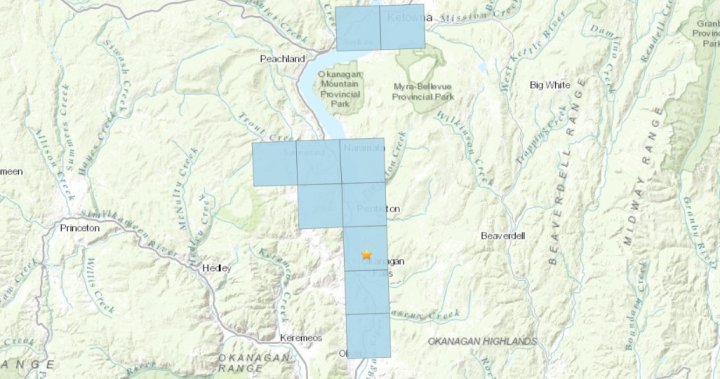A 2.6-magnitude earthquake shook parts of the South Okanagan in British Columbia on a Friday afternoon. The epicentre was located around 12 km southeast of Penticton, at a depth of 10 km underground. The quake was felt in several areas including Penticton, Okanagan Falls, Kaleden, and parts of Kelowna. The U.S. Geological Survey recorded the earthquake at 4 km north-northeast of Okanagan Lakes, but at a depth of 14.4 km. Reports indicate that a number of individuals in various locations felt the rumblings, including those in Penticton, Summerland, Oliver, Kelowna, and in Oroville, Washington. Despite the tremors, there have been no reports of any damage caused by the earthquake, and experts from Earthquakes Canada have stated that no damage would be expected from the relatively small magnitude of the quake.
The earthquake serves as a reminder of the geologic activity that occurs in the region, where seismic events are not uncommon. The South Okanagan area is part of the broader seismically active zone of the Pacific Ring of Fire, which is known for its frequent earthquakes and volcanic eruptions. While the recent earthquake was relatively minor and caused no major harm, it highlights the importance of being prepared for potential seismic events in the area. Residents are encouraged to have emergency plans in place, as well as supplies such as water, non-perishable food, and first aid kits, to ensure their safety in the event of a larger earthquake.
Local authorities and emergency response teams are closely monitoring the situation following the earthquake, ensuring that there are no immediate threats to public safety or infrastructure. Earthquakes Canada, along with other agencies, will continue to assess the seismic activity in the region to provide accurate information and guidance to residents. Public awareness and education about earthquake preparedness and safety measures are crucial in mitigating the risks associated with seismic events. By staying informed and taking proactive steps to prepare for earthquakes, individuals and communities can reduce the potential impact of such events on their lives and properties.
The earthquake in the South Okanagan serves as a reminder of the importance of understanding and respecting the natural forces that shape our planet. While earthquakes are a natural phenomenon, their occurrence can have significant consequences for human populations and infrastructure. By studying and monitoring seismic activity, scientists and experts can provide valuable insights into the behavior of earthquakes and help communities prepare for potential disasters. Efforts to strengthen building codes, infrastructure, and emergency response systems can contribute to reducing the impact of earthquakes and protecting lives and property.
In conclusion, the earthquake in the South Okanagan region is a reminder of the seismic activity that occurs in the area and the importance of being prepared for potential earthquakes. While the recent quake was relatively minor and caused no significant damage, it underscores the need for public awareness and education about earthquake safety measures. By taking proactive steps to prepare for earthquakes and staying informed about seismic activity, individuals and communities can enhance their resilience and reduce the risks associated with earthquakes. Continued monitoring and assessment of seismic activity by experts will help ensure the safety and well-being of residents in earthquake-prone regions like the South Okanagan.


